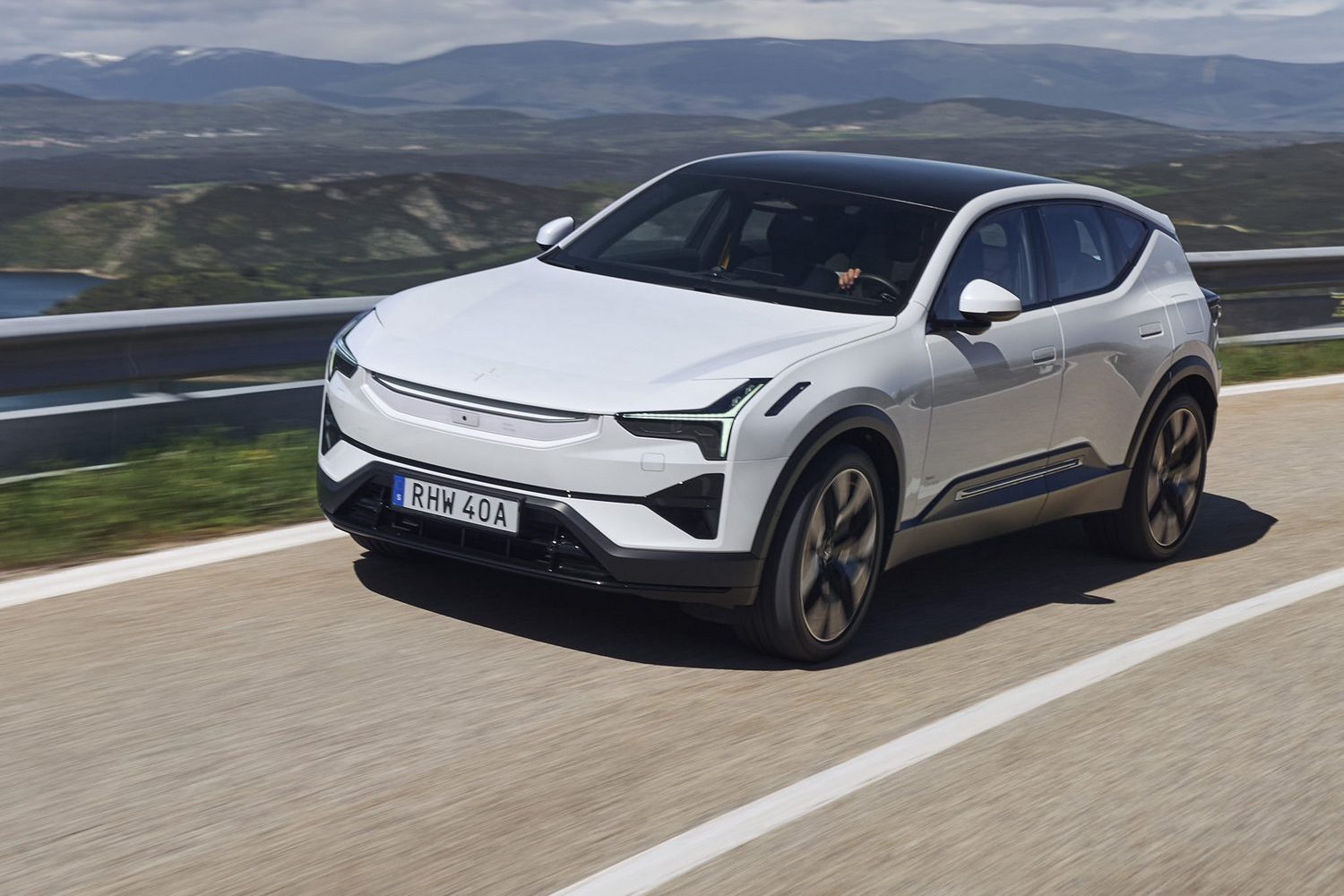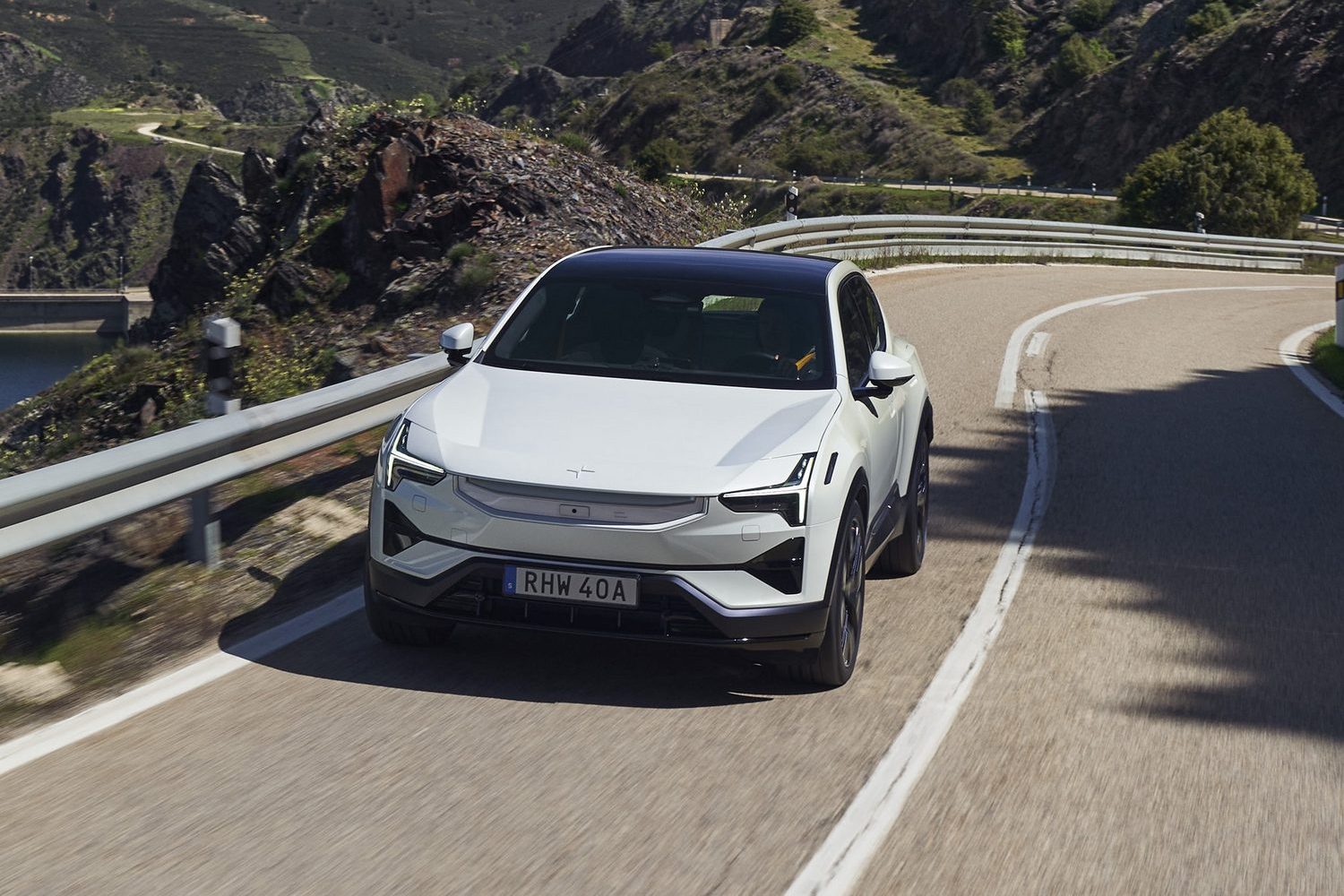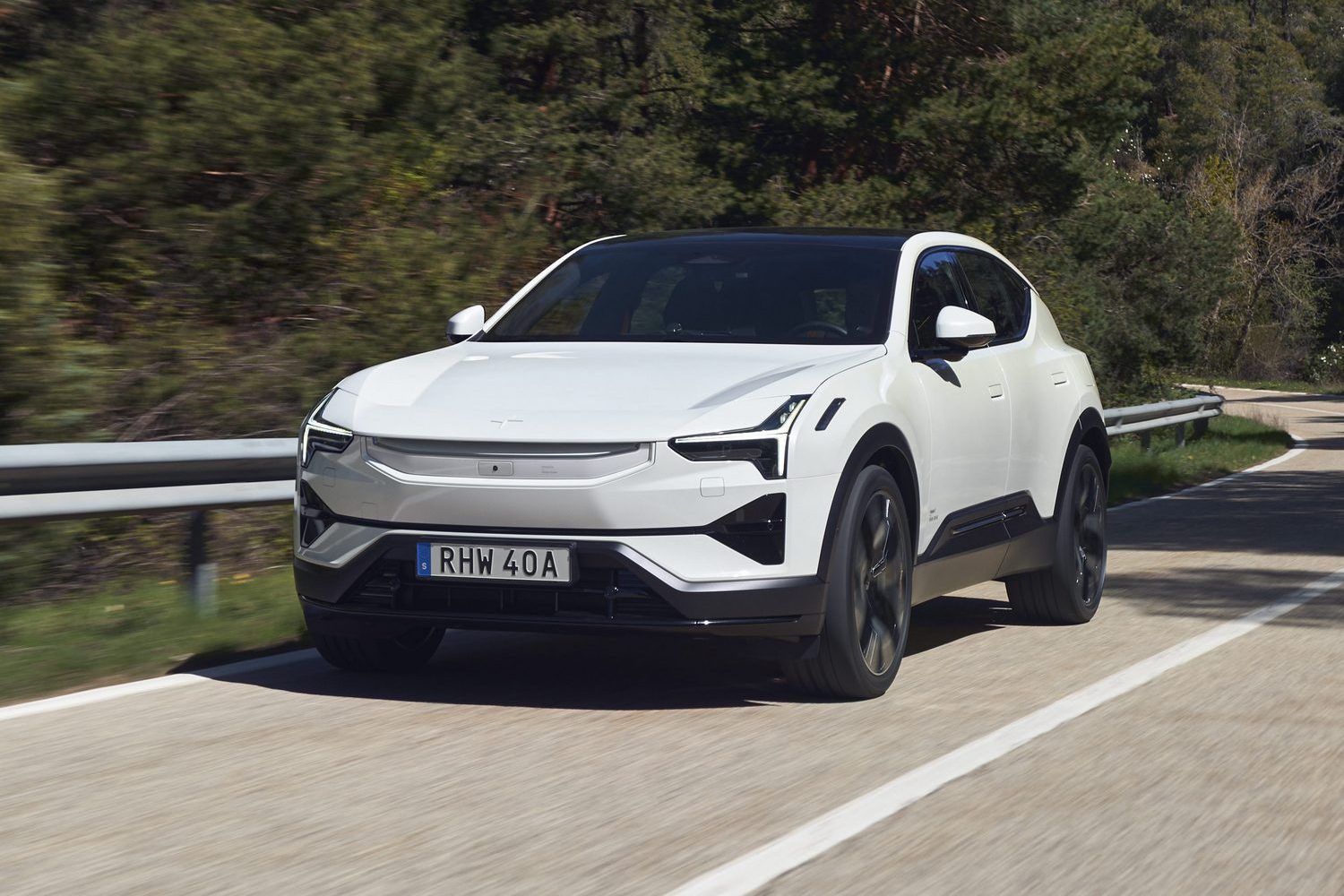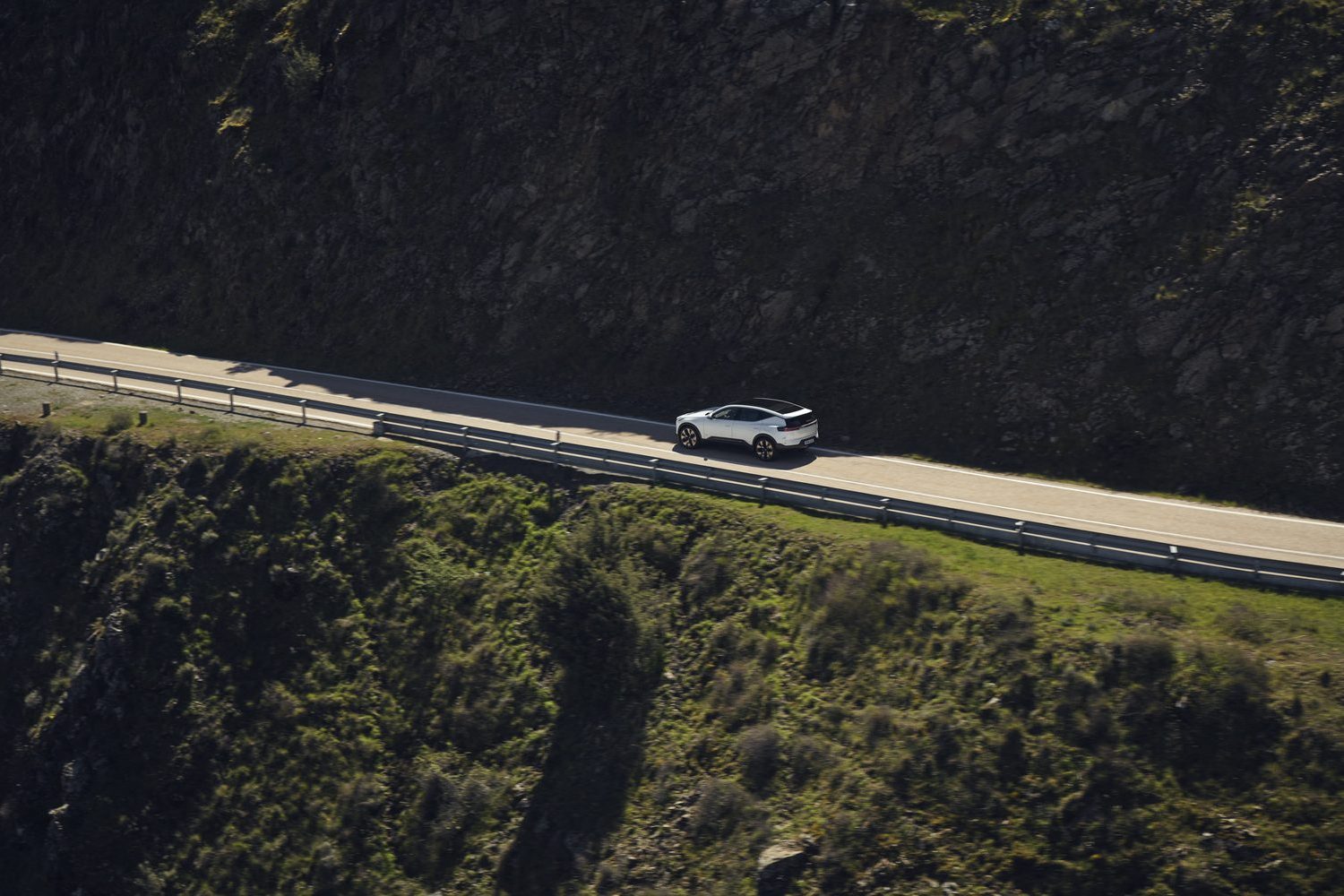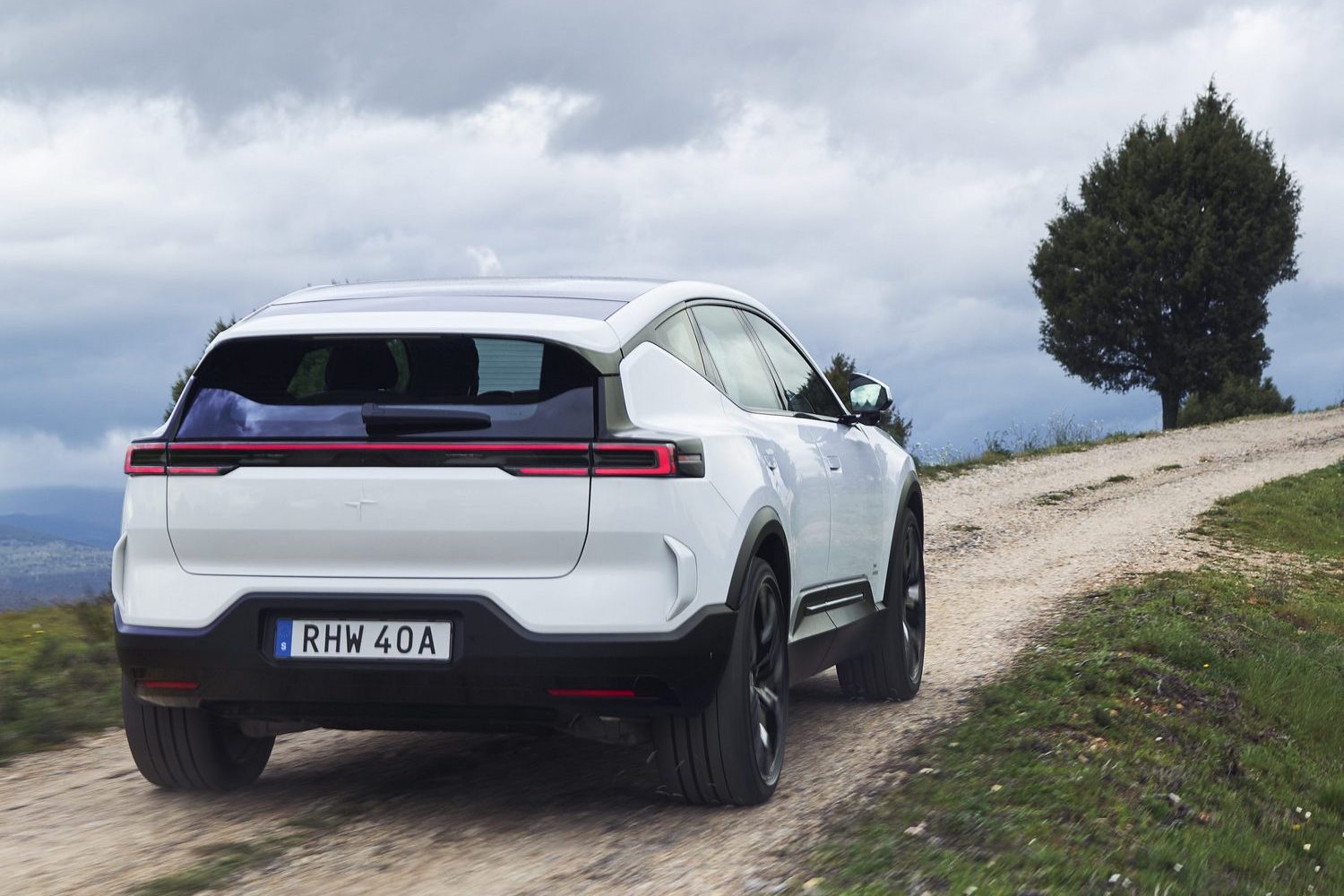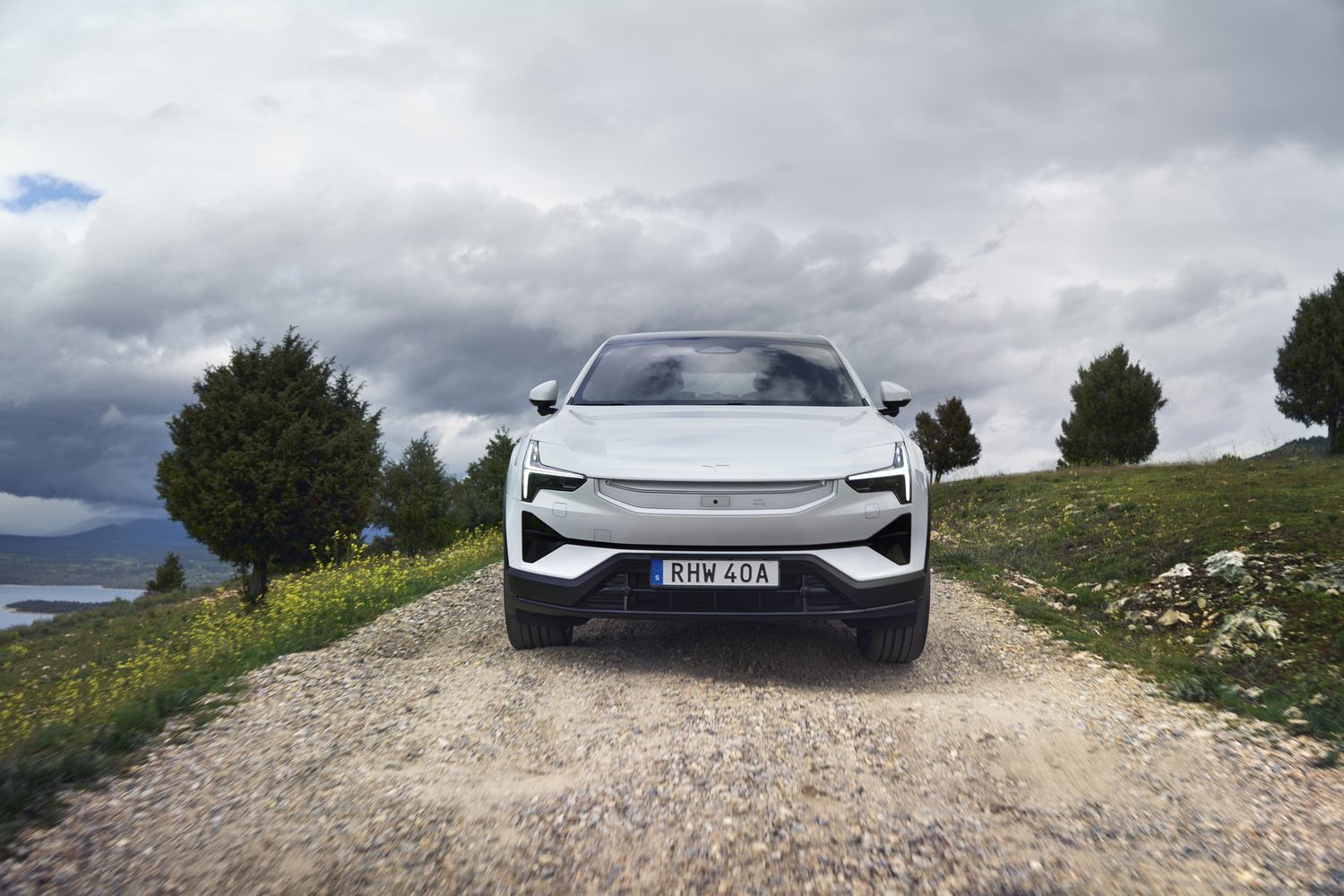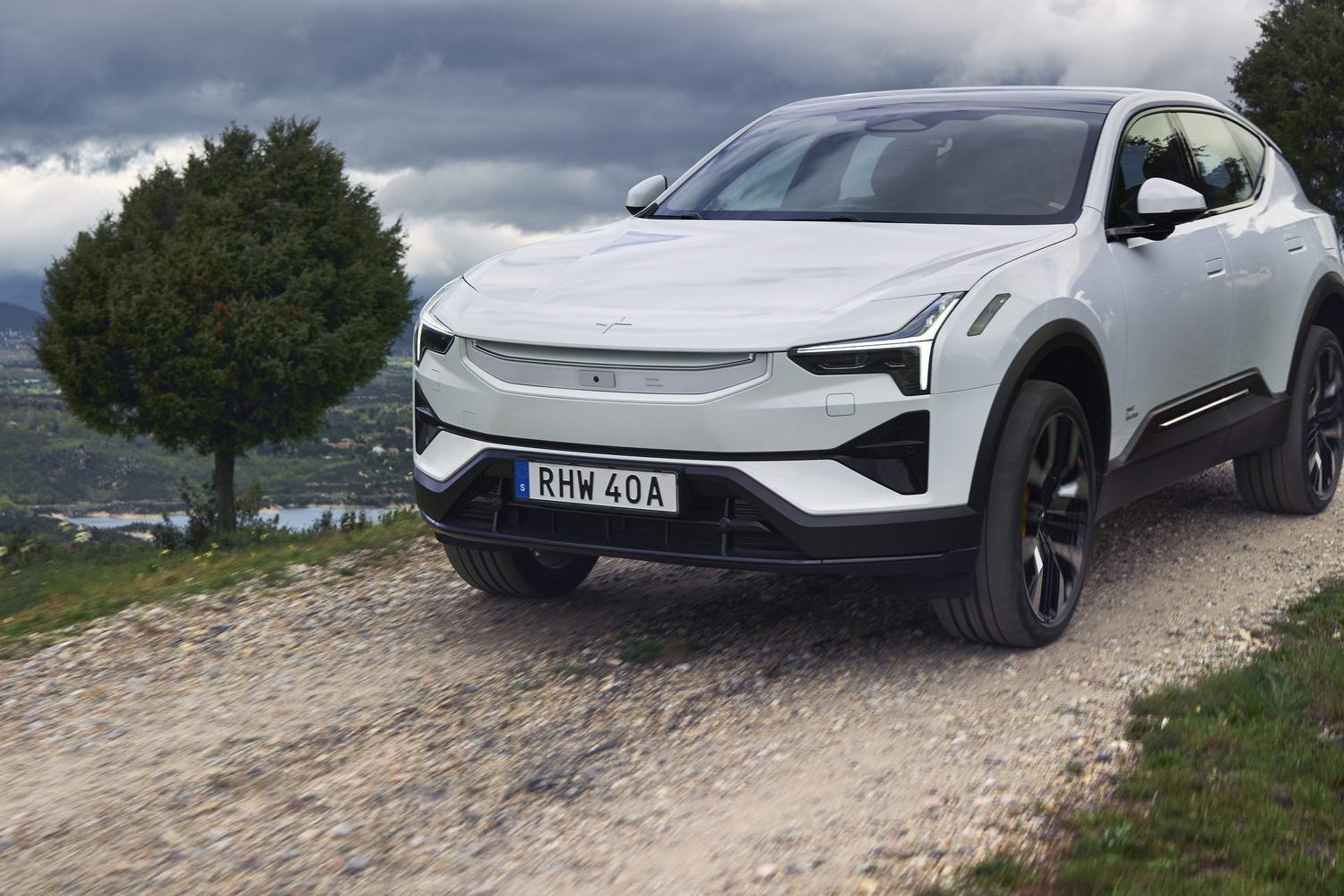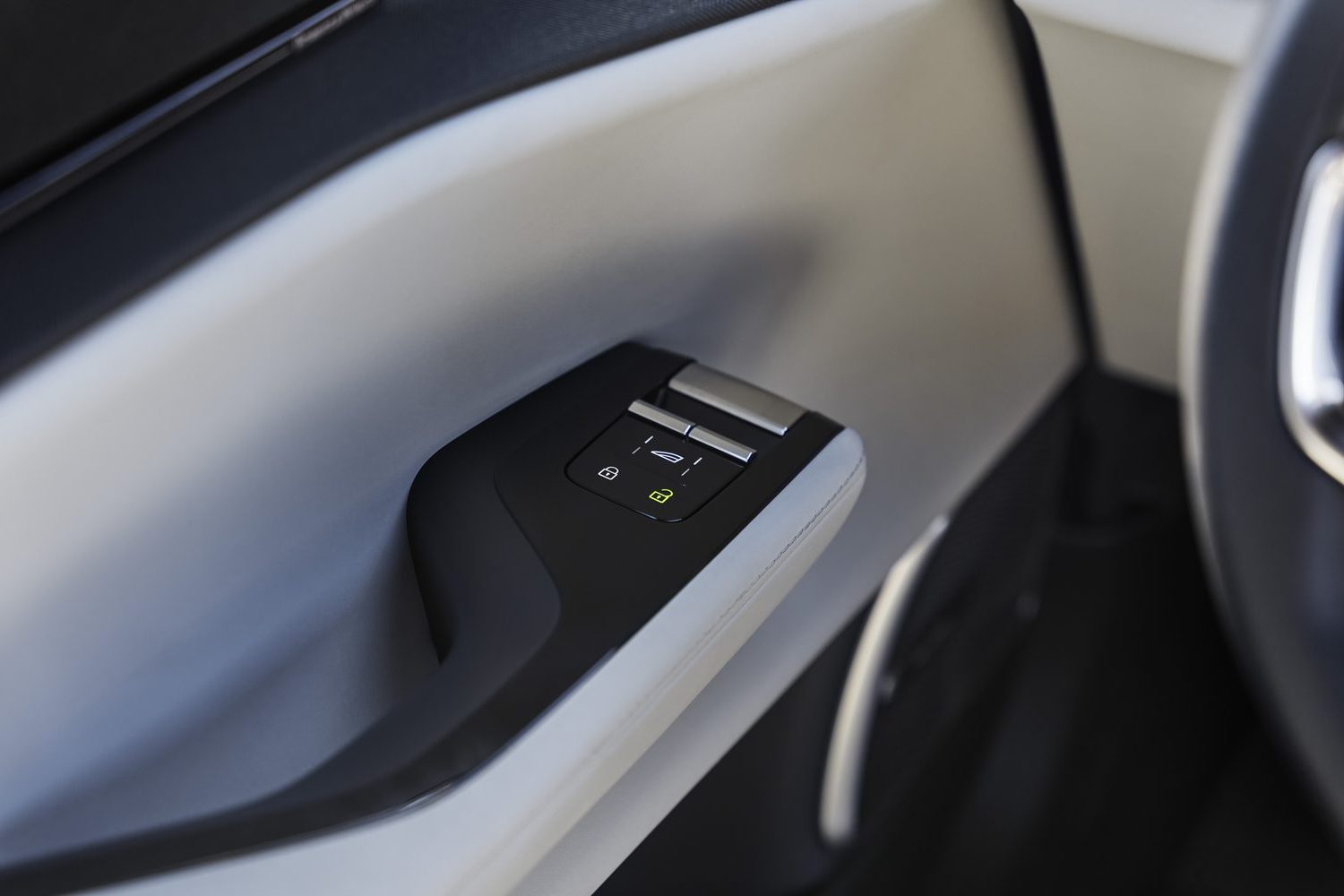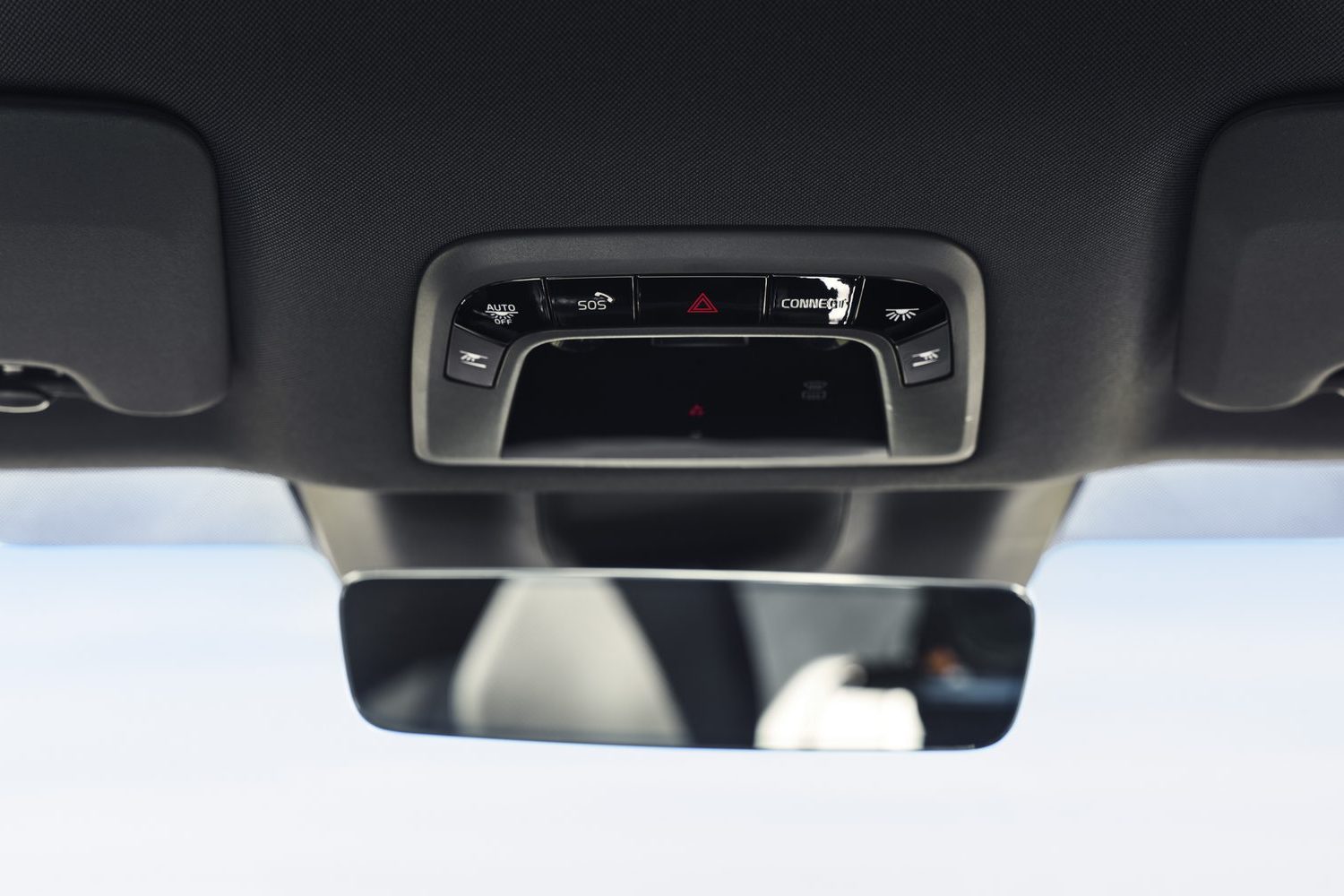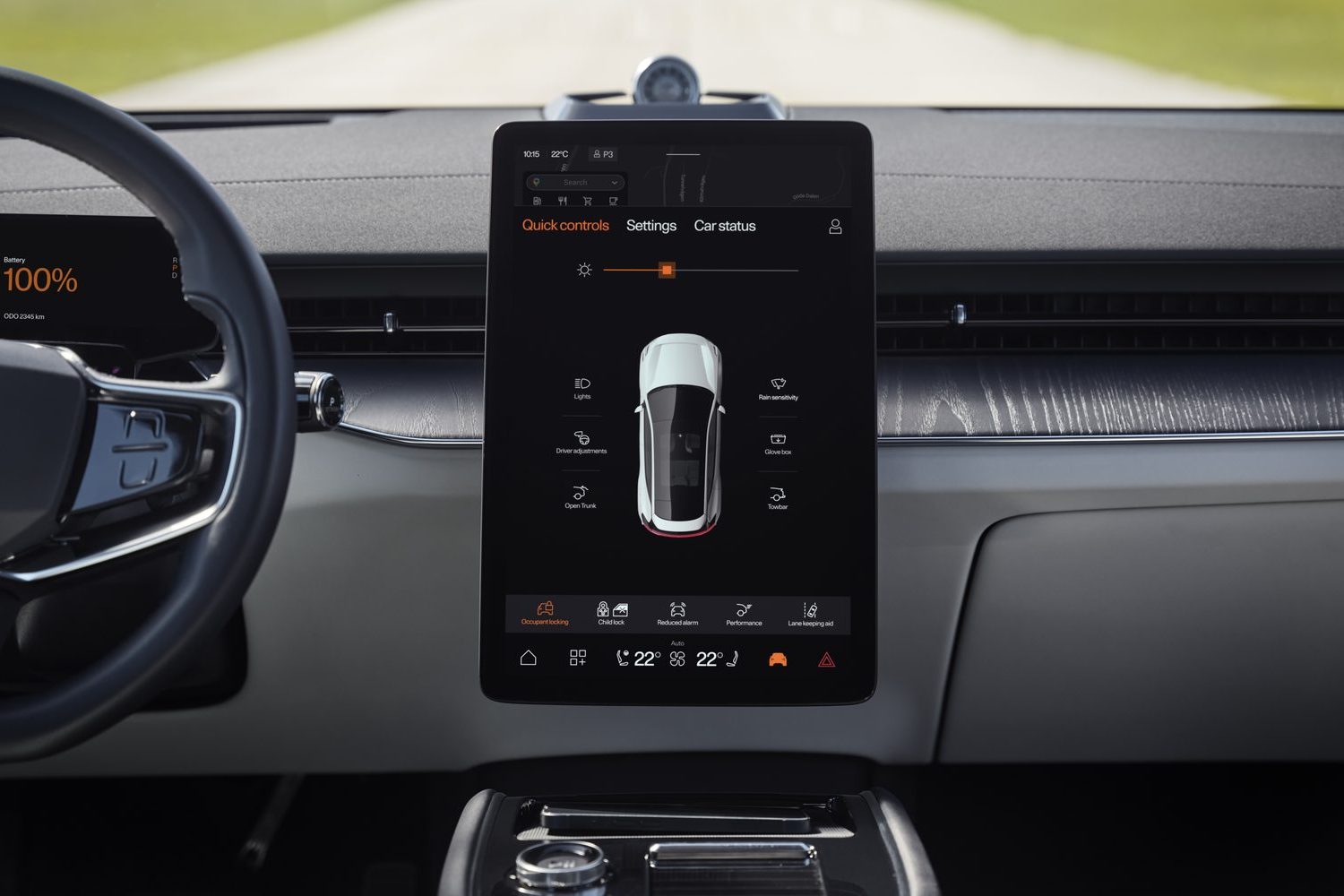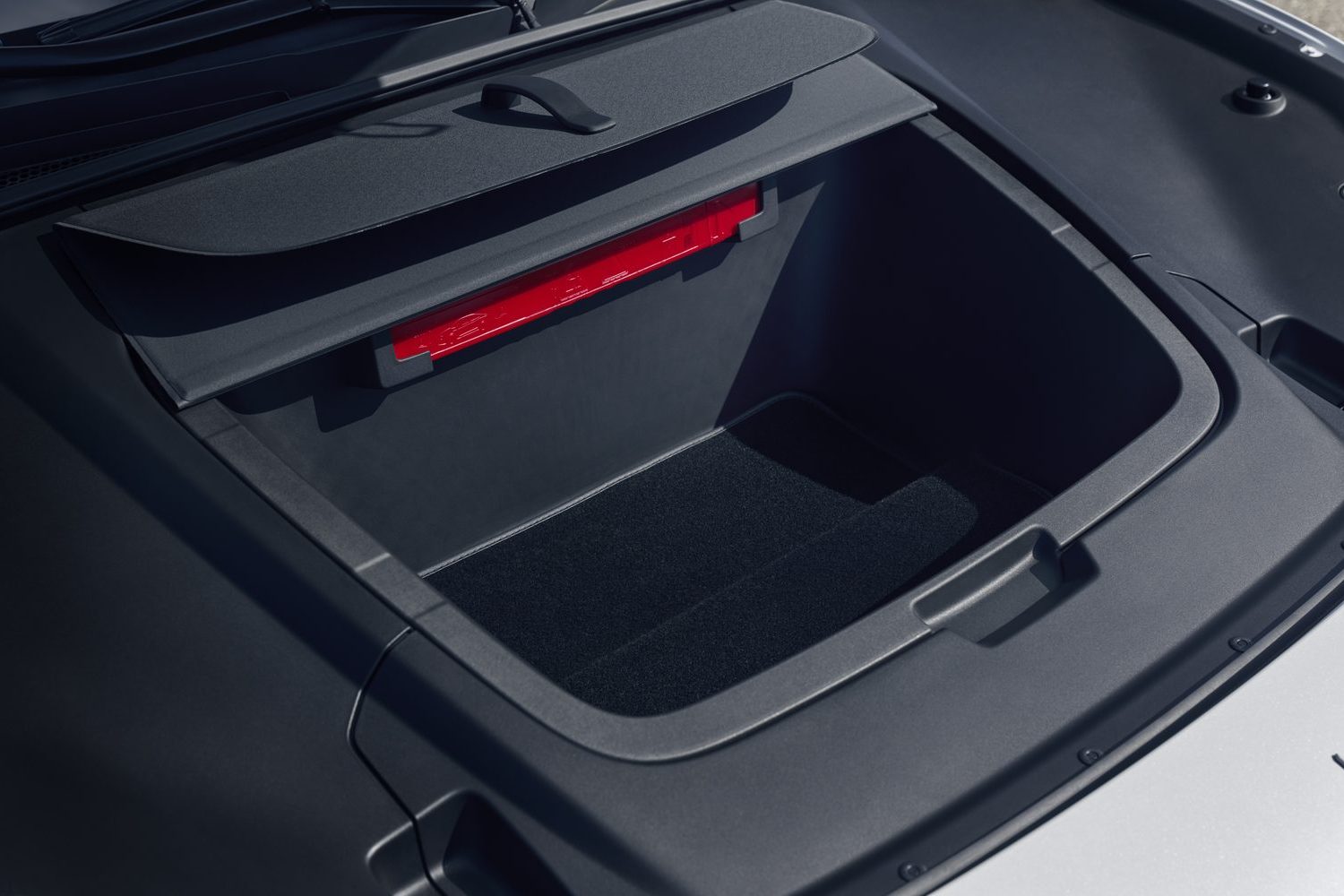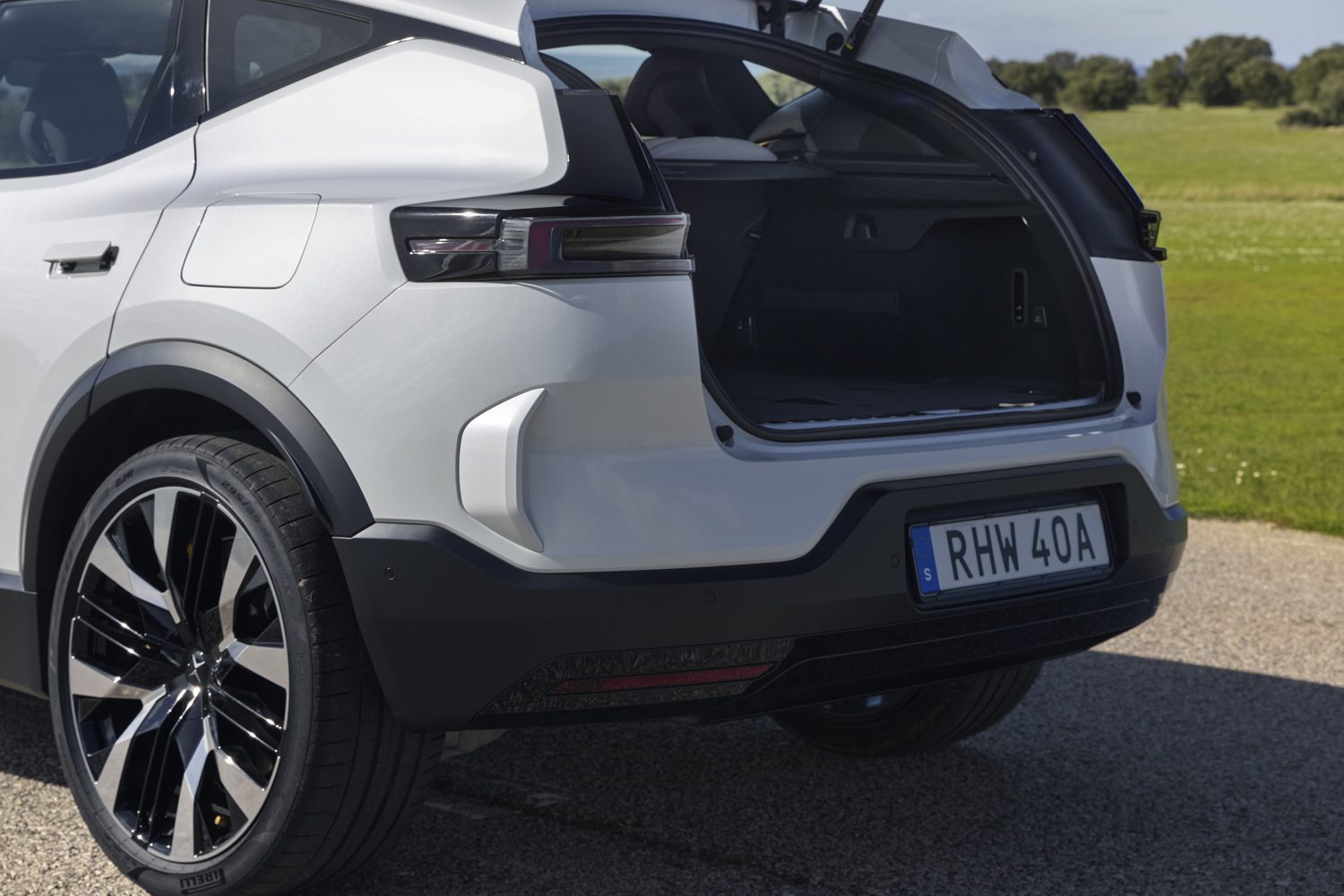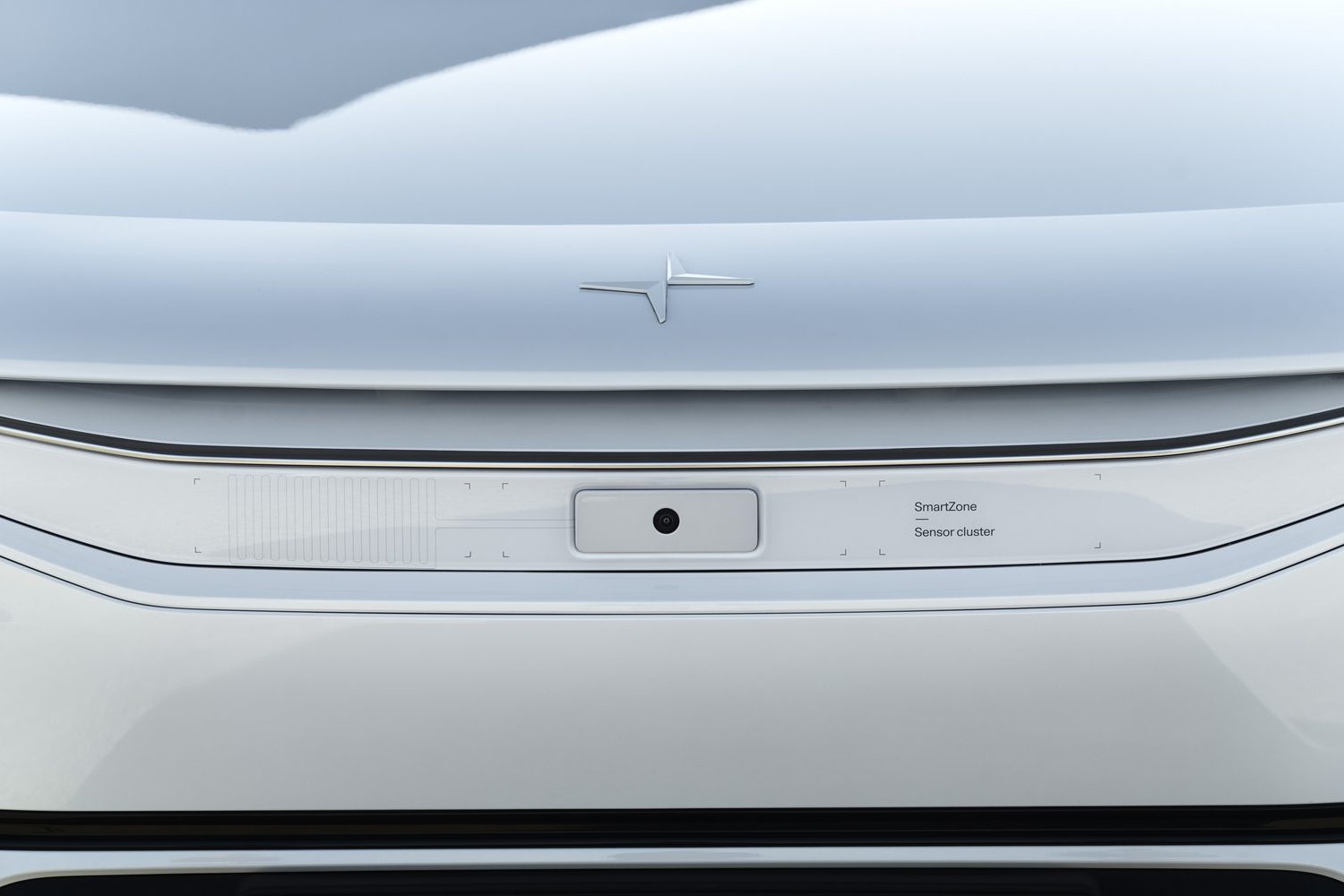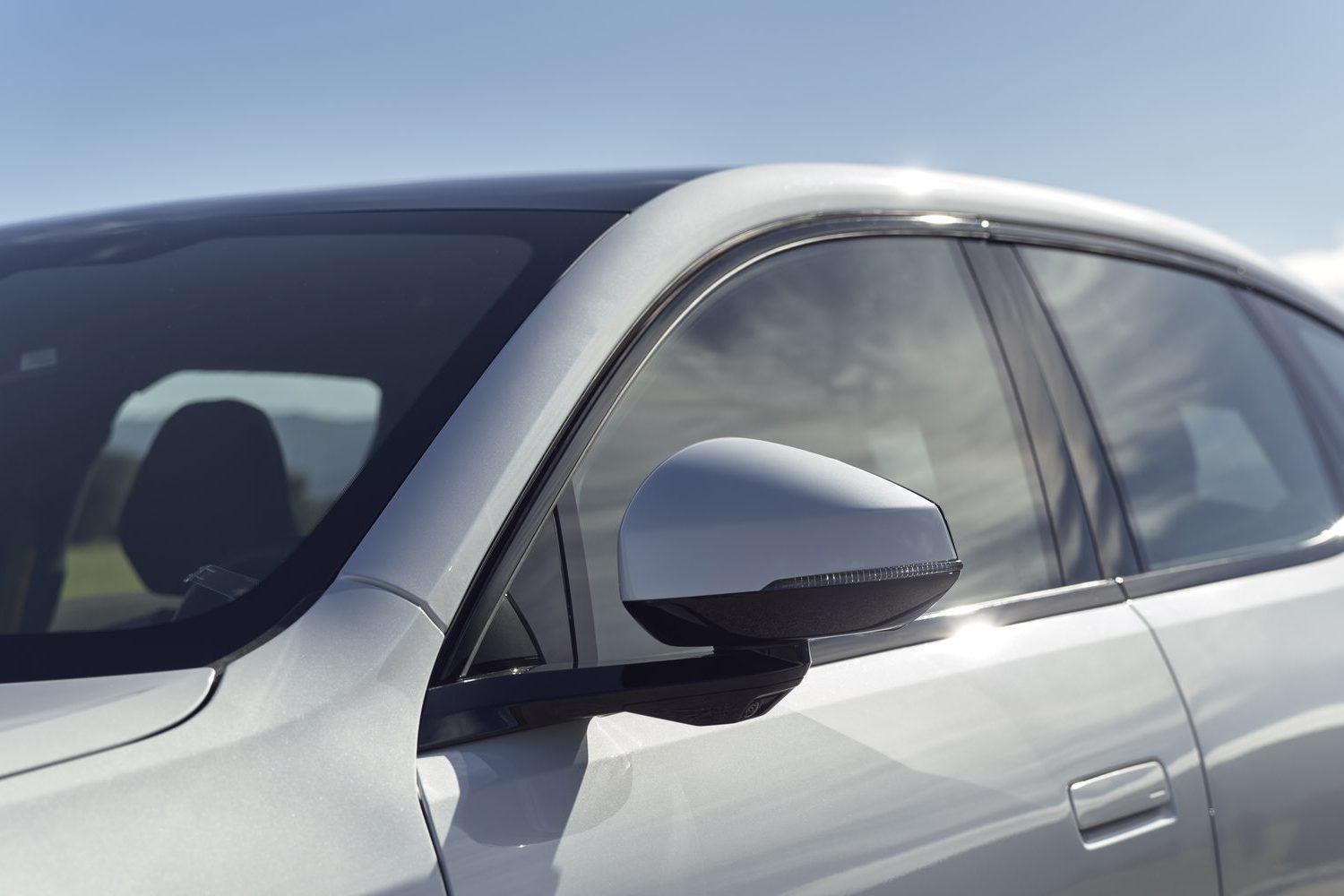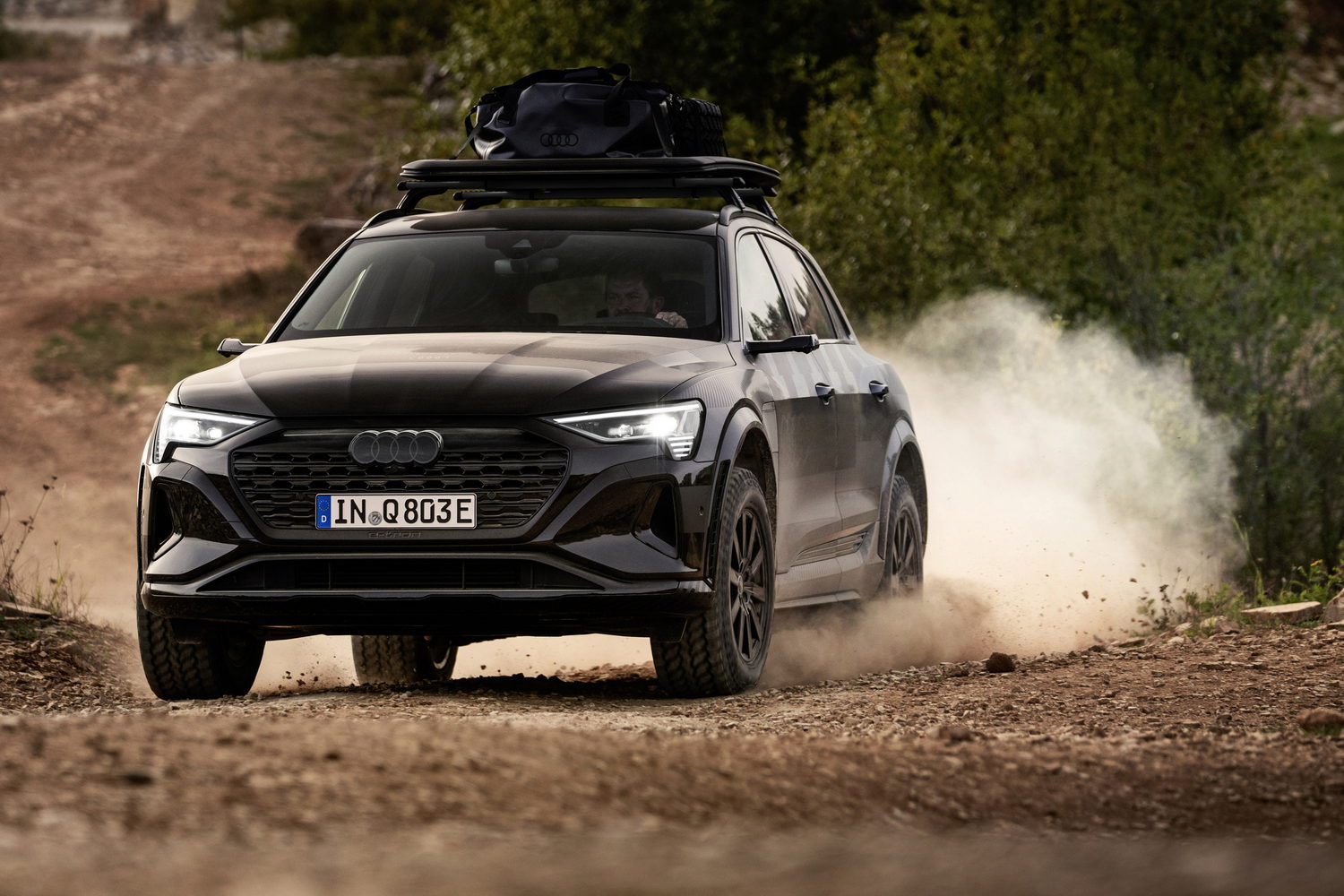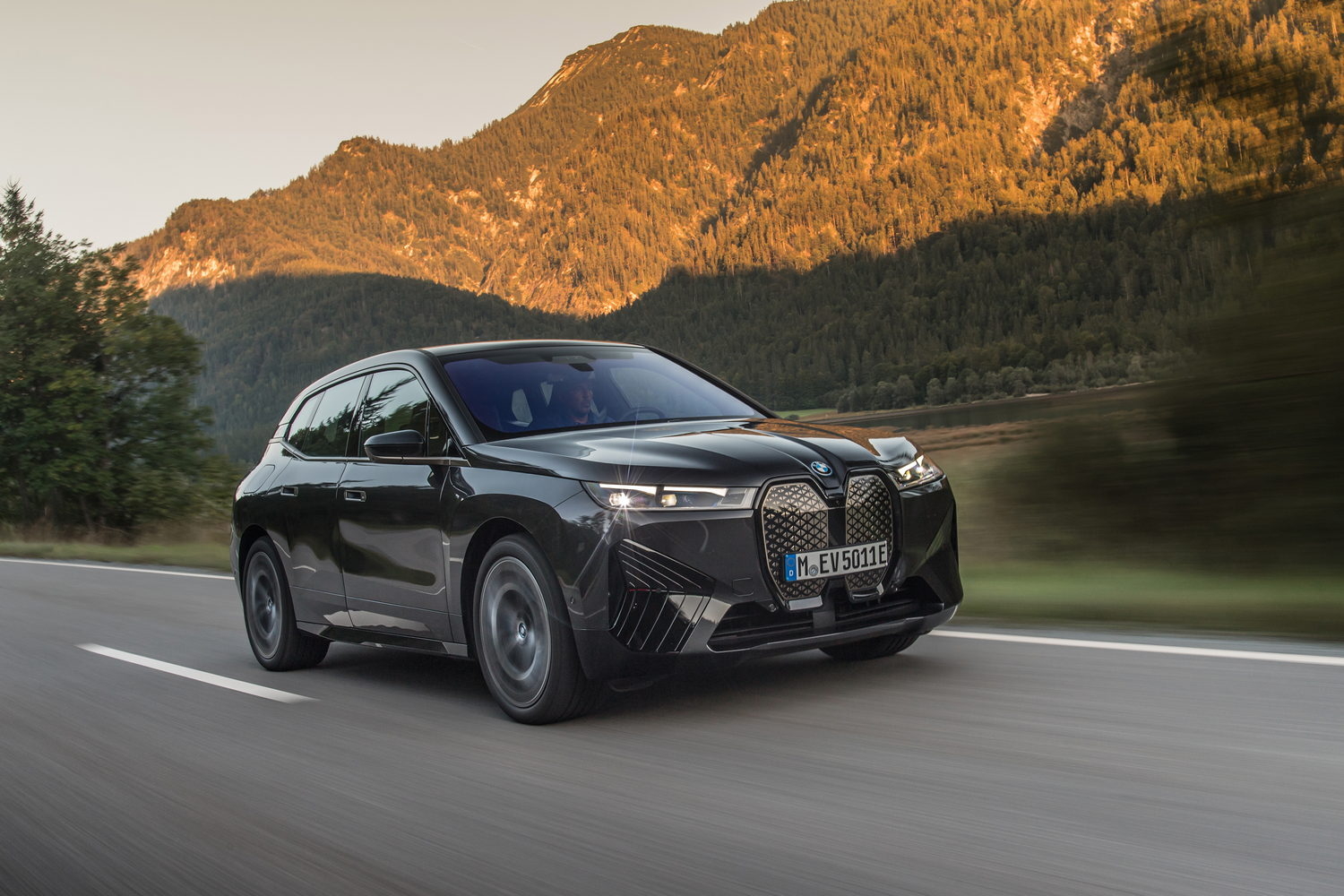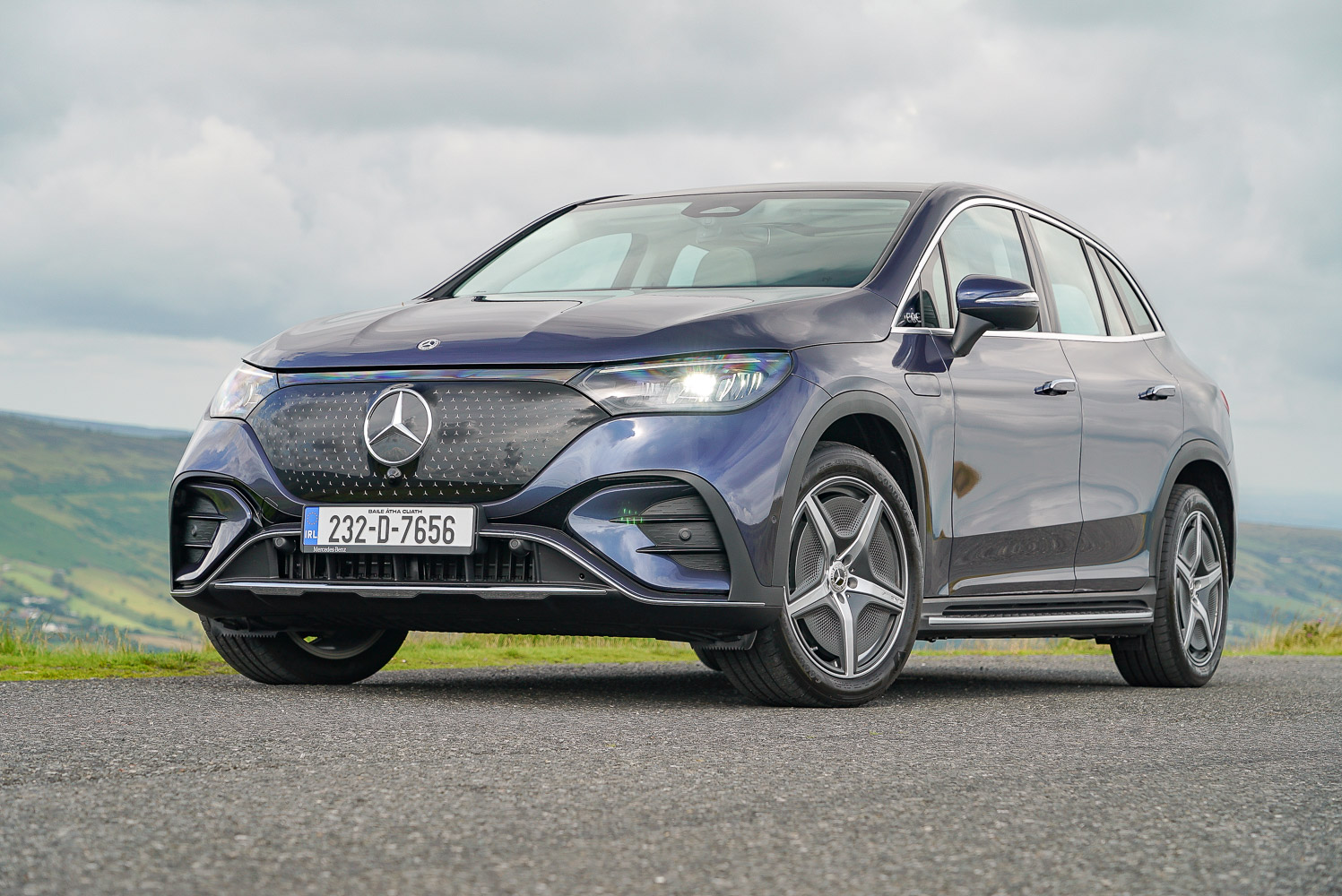After much waiting, Polestar is no longer a one-car brand, and now you can pick from two models (and, imminently, three...) in the Polestar showroom. Alongside the existing Polestar 2, here’s the bigger, more overtly luxurious and considerably more expensive, Polestar 3.
The Polestar 3 arrives with slick styling, long range on one charge and a super-stylish cabin. It’s aimed right at the premium German brands, but equally designed to bring something a little different to the electric SUV table.
In the metal
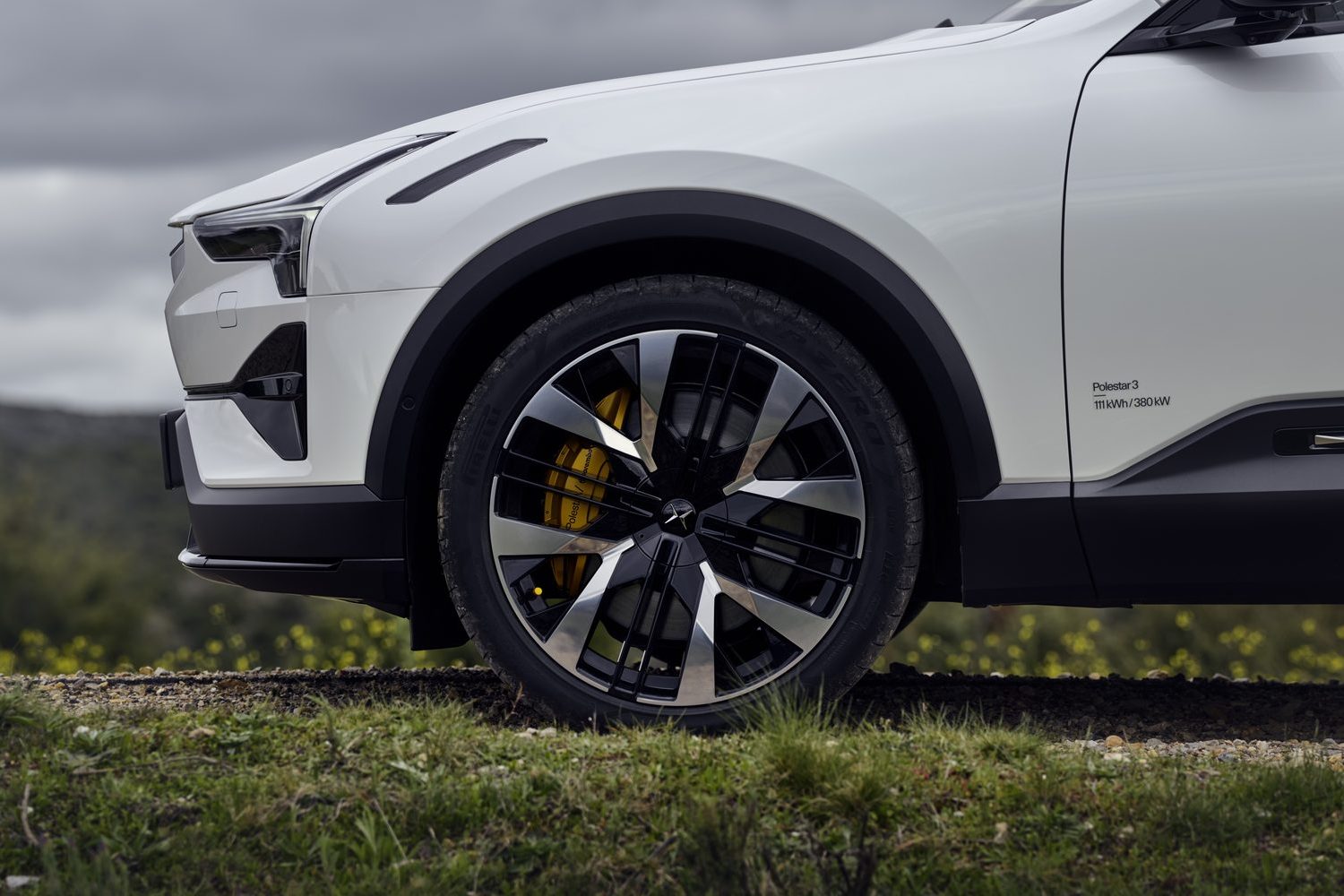
The Polestar 3 is a big, but not especially tall, five-seat SUV that shares a platform, batteries and motors with the toweringly tall Volvo EX90, but which aims to be the sporty, driver’s choice in the segment. To do that, it’s going to have to get past the likes of the BMW iX and the Mercedes EQE SUV, and the Polestar 3 gets off to a flying start by being much, much better looking than either.
It has a chiselled, sharp-edged look, that’s far more attractive than the needlessly confrontational BMW or the jelly-mould-looking Mercedes. It’s also lower than the BMW (which is far from the tallest SUV around) and more than 30cm lower than its big Volvo EX90 cousin. Polestar doesn’t refer to the 3 as a coupe-SUV, but it has given it a deliberately lower roofline, partly for style, partly for superior aerodynamics.
Those aerodynamics are enhanced by a nose-mounted wing that directs airflow along the bonnet, up the windscreen, over the roof and down to the rear spoiler, all in the name of making the 3 cut through the air more efficiently. Polestar’s designer Max Missoni claims that there’s nothing added to the body that’s not a functional item - and it’s pleasantly refreshing to meet a big SUV with a low nose and a roof that ends well beneath my chin.
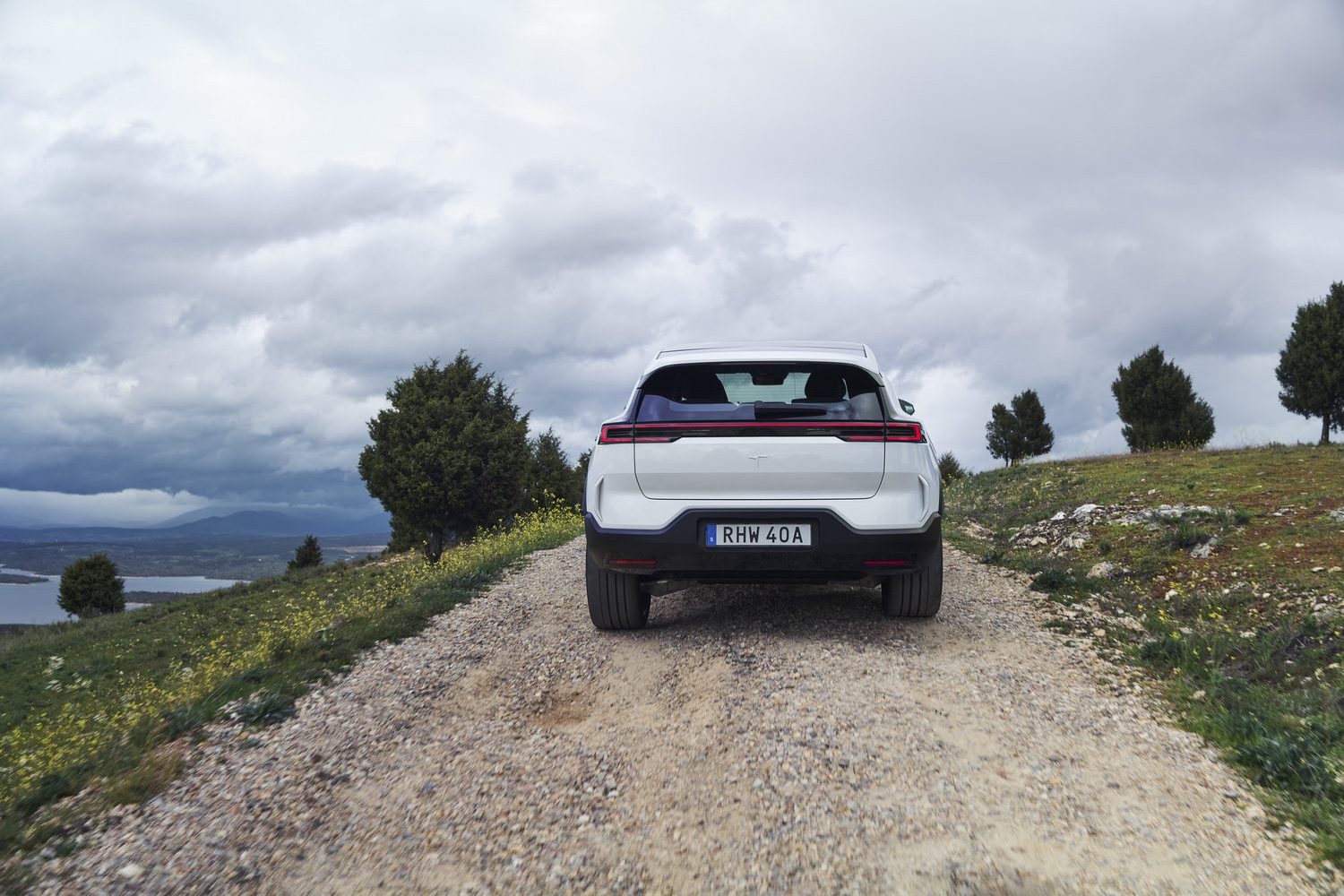
Inside, in the back seats, there’s still legroom and headroom aplenty, partly because Polestar has decided to compromise in certain areas to bring the back seats rearwards and downwards. In doing so, it has made sure that there’s no chance of there ever being a seven-seat version of this car. To make one of those would be to tread too heavily on the toes of the bigger Volvo, and anyway Polestar avers that this is the selfish driver’s car of the segment, focused on the person behind the wheel. If you want space for extra people, get the Volvo.
The Polestar 3 has also compromised on boot space. The plunging roofline and the fact that the rear seats are set so far back means that there’s a mere 484 litres of space up to the luggage cover, although there is a 35-litre ‘frunk’ up front, and Polestar does mention that the 3’s boot holds 597 litres if you calculate the volume up to the roof lining.
Certainly, those back seats are very spacious. Even all six-and-a-bit-foot of me can get loungey-comfortable in the back, and there’s no real shortage of headroom. The massive panoramic glass roof also means that there’s plenty of light even with that swooping roofline and the chunky rear pillars.
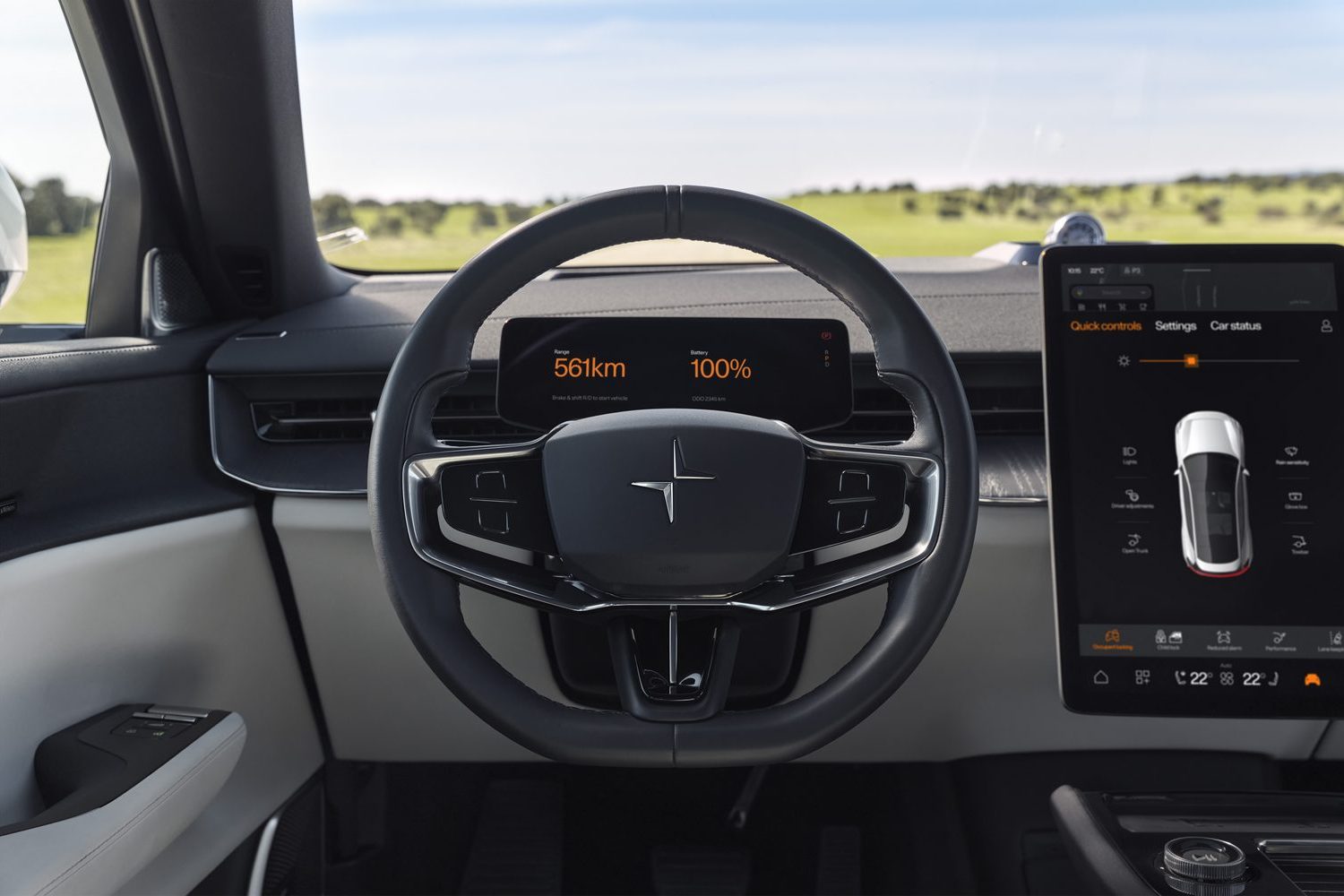
Up front, you sit not too high on exceptionally comfortable seats looking out over a minimalist Scandi-style dashboard. Polestar reckons that by going for an understated cabin, it adds luxury with the materials used, including lots of recycled and recyclable stuff, or optional traced and animal-welfare-approved leather. Up to a point, it works. Most of the bits you touch - from the minimalist switchgear (there are really only the column stalks and the rotary controller for the stereo volume) to the steering wheel rim (rather slim and elegant in feel) - feel really good, but there are some cheap bits, such as wood trim across the dashboard that feels tacky and sounds cheap if you tap it.
The Polestar 3 is certainly practical, though, with plenty of storage in both open and closed sections between the front seats, and big door bins. One thing though - the low roof does mean that the windscreen header rail can feel a bit too close to your head if you’re a taller person. You find yourself ducking under it to see traffic lights. On the upside, get a specced-up model with the marvellous Bowers & Wilkins stereo, and it comes with headrest-mounted speakers which can place each passenger in their own audio cocoon, and which also allows the driver to take phone calls or listen to navigation directions while everyone else keeps listening to tunes.
The big upright touchscreen in the centre of the dash (14.5 inches across the diagonal) is shared, in hardware terms, with the XC90 but the software and graphics are all Polestar’s and look great - we especially love the simple, understated font that Polestar uses for all its lettering and displays. Climate controls are always kept on-screen, which in part compensates for the lack of physical controls, while there’s another bar of screen above that on which you’ll find commonly-used functions and shortcuts.
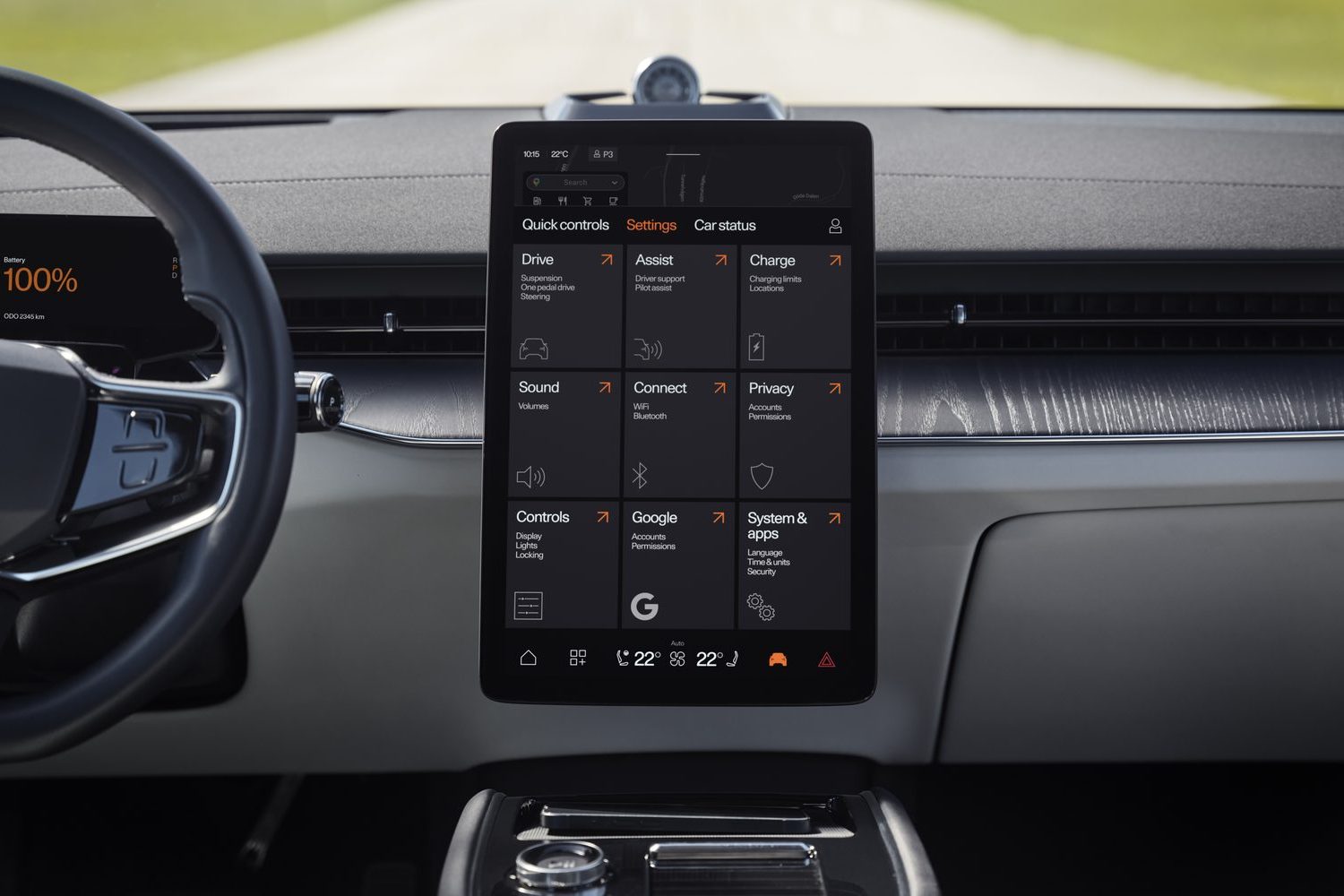
Thankfully, there is a single button which switches off the speed limit alert. The menu system is generally easy enough to use, although as with all such screens it can become complicated when you start looking for lesser-used functions, and the fact that you have to use both the display and then the steering wheel buttons to adjust the door mirrors and the steering wheel reach and rake is just kind of daft.
Driving it
There will, coming soon, be a single-motor version of the Polestar 3, but for the moment buyers only have a choice of two dual-motor versions, one with the Performance pack, and one without. Both share the same 107kWh (net) lithium-ion battery pack, and that means an official range of up to 630km for the standard model, or 560km when fitted with the Performance pack, which is the one we’ve been driving.
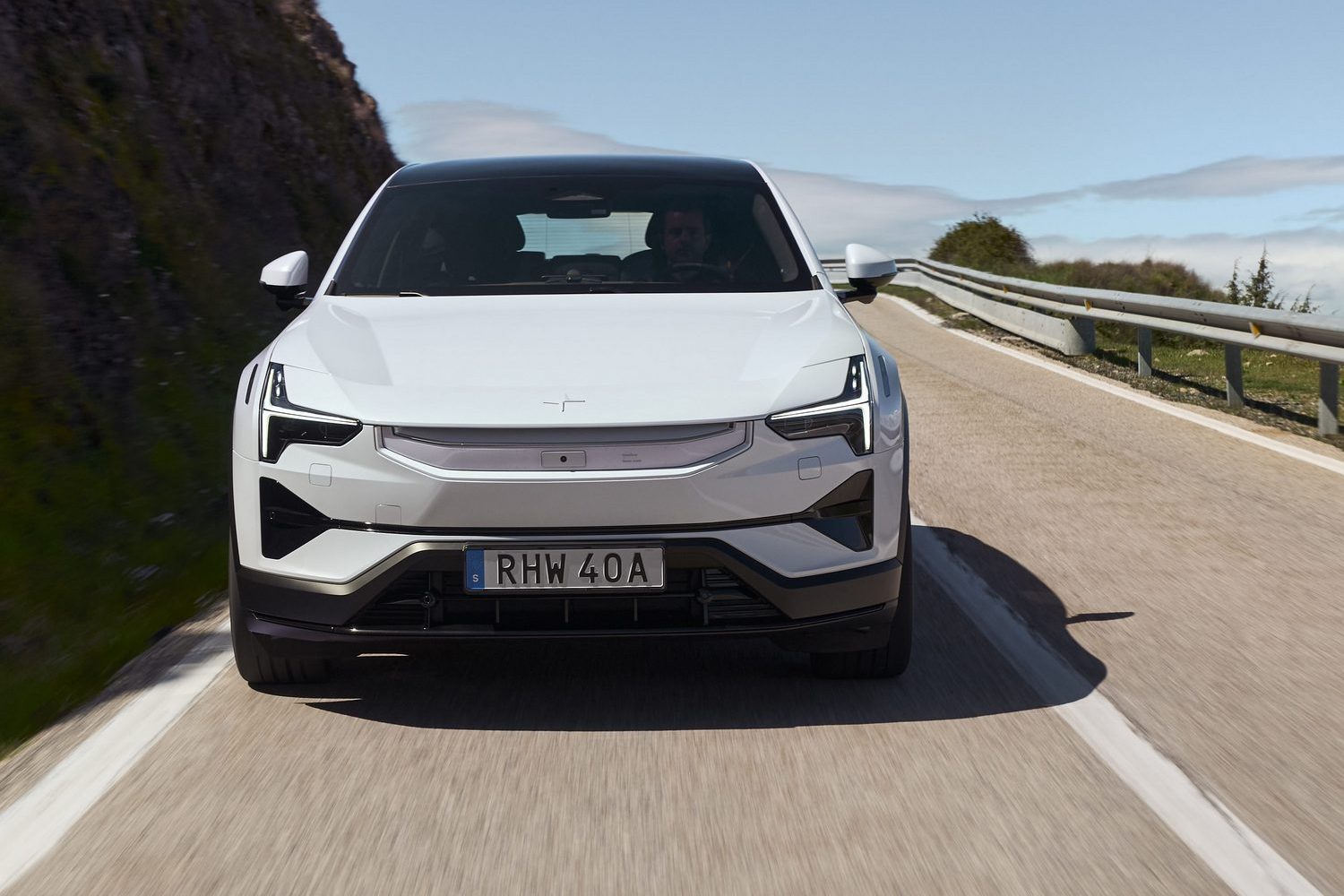
It’s certainly brisk - what car packing 910Nm of torque could not be, even with a 2.6-tonne kerb weight? But we’re less sure that it’s the best model to choose. The regular Dual motor Long range model still has 489hp and 840Nm of torque and is a mere 0.3 seconds slower to 100km/h, a gap you’re unlikely to notice on the public road. Plus, it comes with an extra 70km of available range. That could be important, as the Polestar 3 scampers through its available energy storage quickly at times, with 25kWh/100km not an unusual figure to see on the dash, certainly if you’ve been making use of its ample acceleration. And although it’s also very good at regenerating energy, especially on long downhill sections, we reckon that the extra long-haul breathing room offered by the lesser-powered version makes it the pick of the lineup, at least until the single motor Polestar 3 arrives. You’ll also save yourself a useful €7,000.
Polestar bills the 3 as the sports car of the premium electric SUV segment. Joakim Rydholm, the car’s chief chassis engineer, is a keen amateur rally driver who counts the great Stig Blomqvist as a friend, and it’s he who has tuned the Polestar 3’s air suspension and, crucially, it’s clever rear clutch pack. Sitting between the rear electric motor and the wheels, this clutch pack acts like a locking differential. It can send torque from side to side at the rear, which is helpful when the grip levels across a road vary or if you ever actually want to take your Polestar 3 off-road (it does have a useful 201mm ground clearance, in fairness) and it can also send a larger proportion of the available torque to the outside rear wheel when cornering, so as to help rotate the 3 more rapidly in towards the apex. It can also disconnect the rear motor entirely from the wheels when you’re cruising along a main road, reducing mechanical drag and energy consumption.
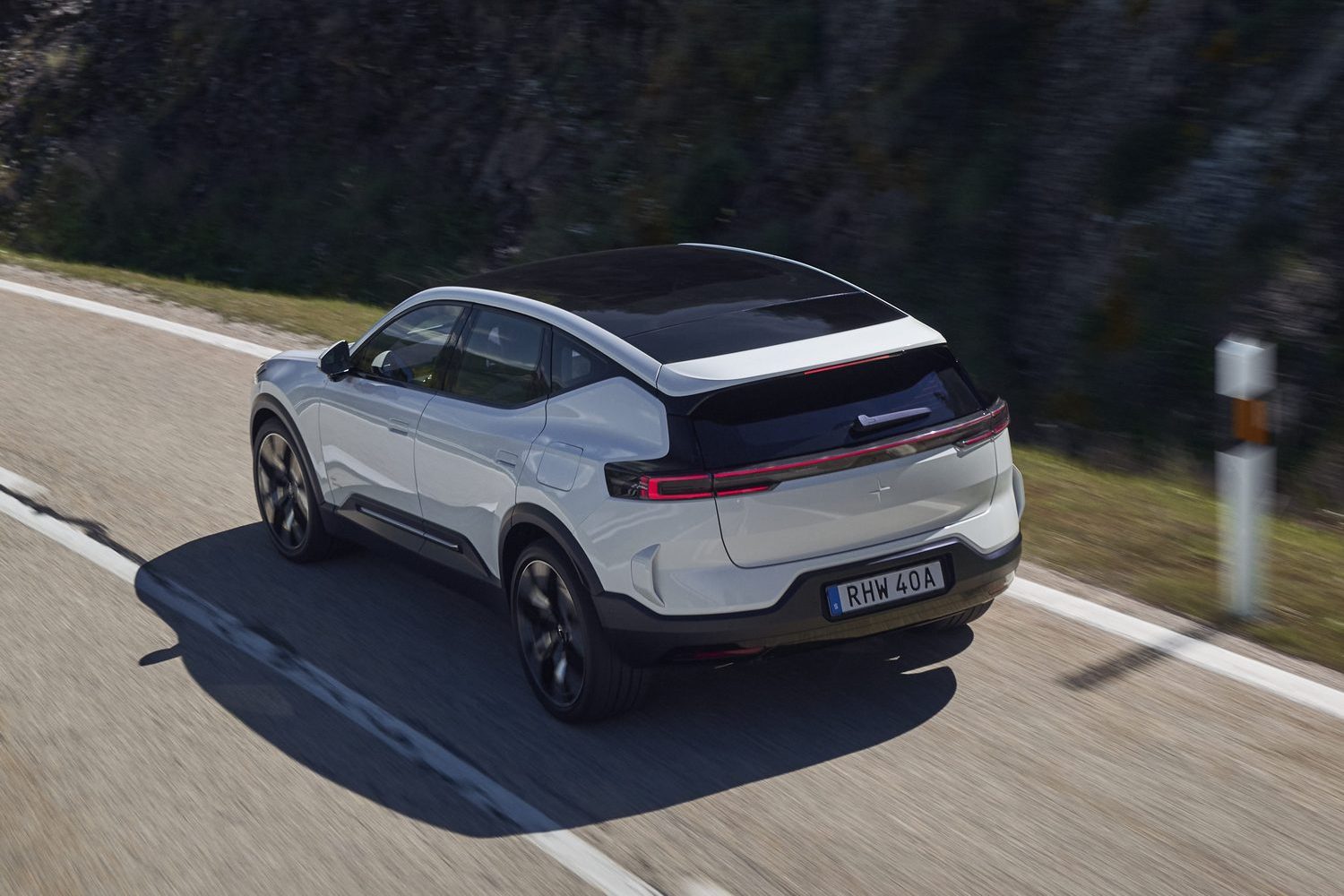
It also works, at least up to a point. Dial the various suspension, throttle and steering settings all up to their maximum level of sportiness, and the Polestar 3 initially feels agile and biddable. The steering has delightful weight and feedback through that slim steering wheel rim, and you can press on along a twisty road with no small amount of entertainment. However, there does come a point when the laws of physics sidle past that clever clutch pack and the air springs, and remind you that this is still a 2.6-tonne SUV, and when that happens you’ll notice that the nose can start to feel a bit washed-out and slightly reluctant to turn in to a corner.
It’s not bad, but it does take a little of the sporting veneer off. At least this Performance pack version gets the brilliant 400mm Brembo brakes, which do a terrific job of transitioning between regenerative and physical braking. They also look great, sparkling in Swedish Gold metallic paint behind the big alloy wheels (22-inch rims are standard on this model).
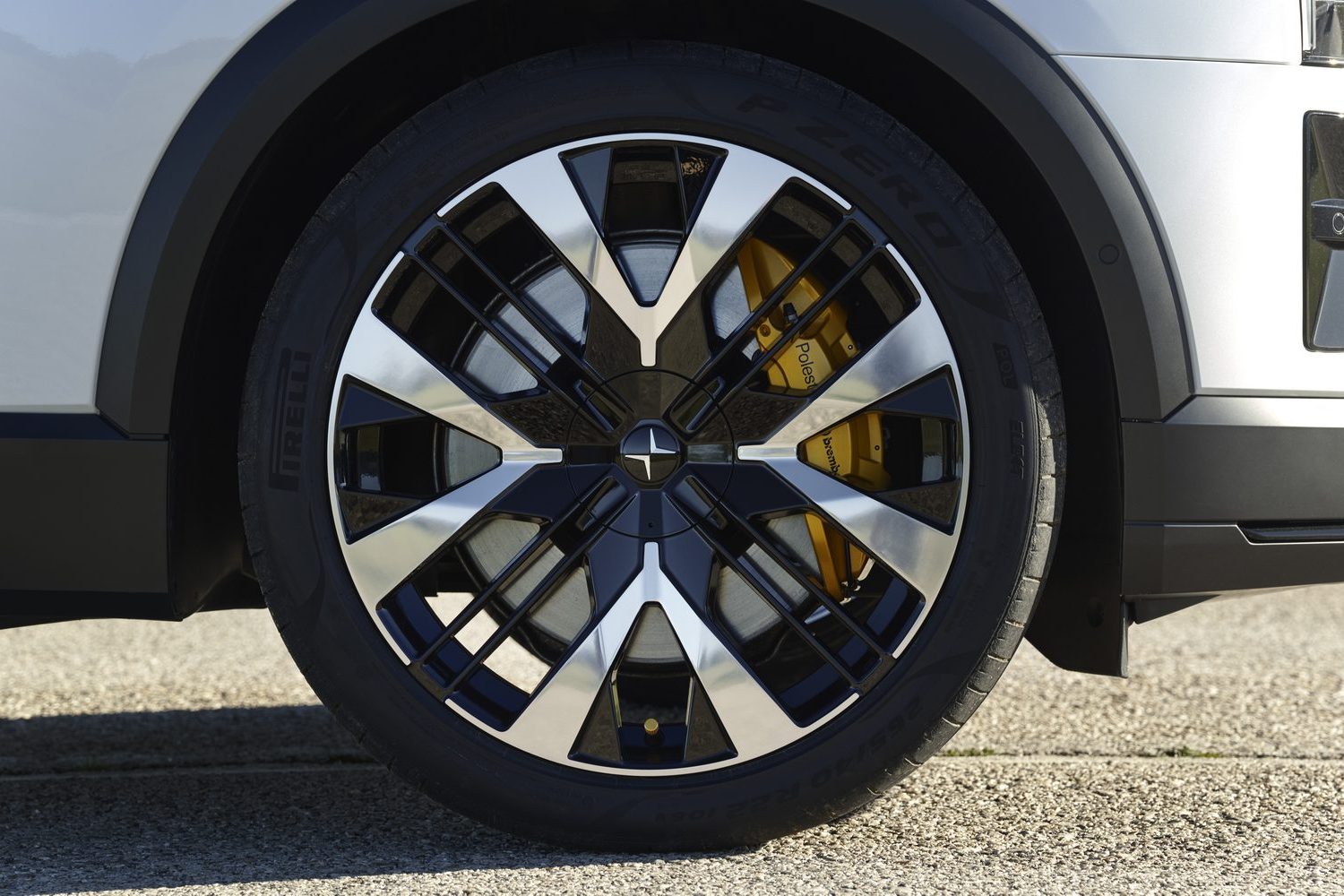
The Polestar 3 is exceptionally comfortable, although that does come with the caveat that even with the air springs and the adaptive dampers it’s still a relatively stiffly-set-up car, more so than its rivals from BMW and Mercedes, and so sharp intrusions and especially rough surfaces will make themselves emphatically felt within the cabin, both physically and aurally. When cruising, though, tyre and wind noise are very well suppressed.
What you get for your money
Polestar 3 prices in Ireland start from €93,200 for the Dual motor Long range model, rising to €100,200 for this Performance pack model. Not cheap, but a lot less cash than is asked for even the basic Volvo EX90 - clearly those extra seats and all that air in the cabin cost a lot. Standard equipment includes active air suspension and electronic dampers, 20-inch wheels, flush pop-out door handles, electric tailgate, LED headlights with active high beams, heated sports front seats with eight-way electric adjustment, a heat-pump heating system, the 14.5-inch touchscreen, a nine-inch driver’s digital instrument display, three-zone climate control with rear seat heating, 300-watt ten-speaker audio, built-in Google Maps, Google Assistant and Spotify, adaptive cruise control, blind spot monitoring, 12 parking sensors and a rear-view camera, plus a three-year vehicle warranty and a separate eight-year battery warranty.
Summary
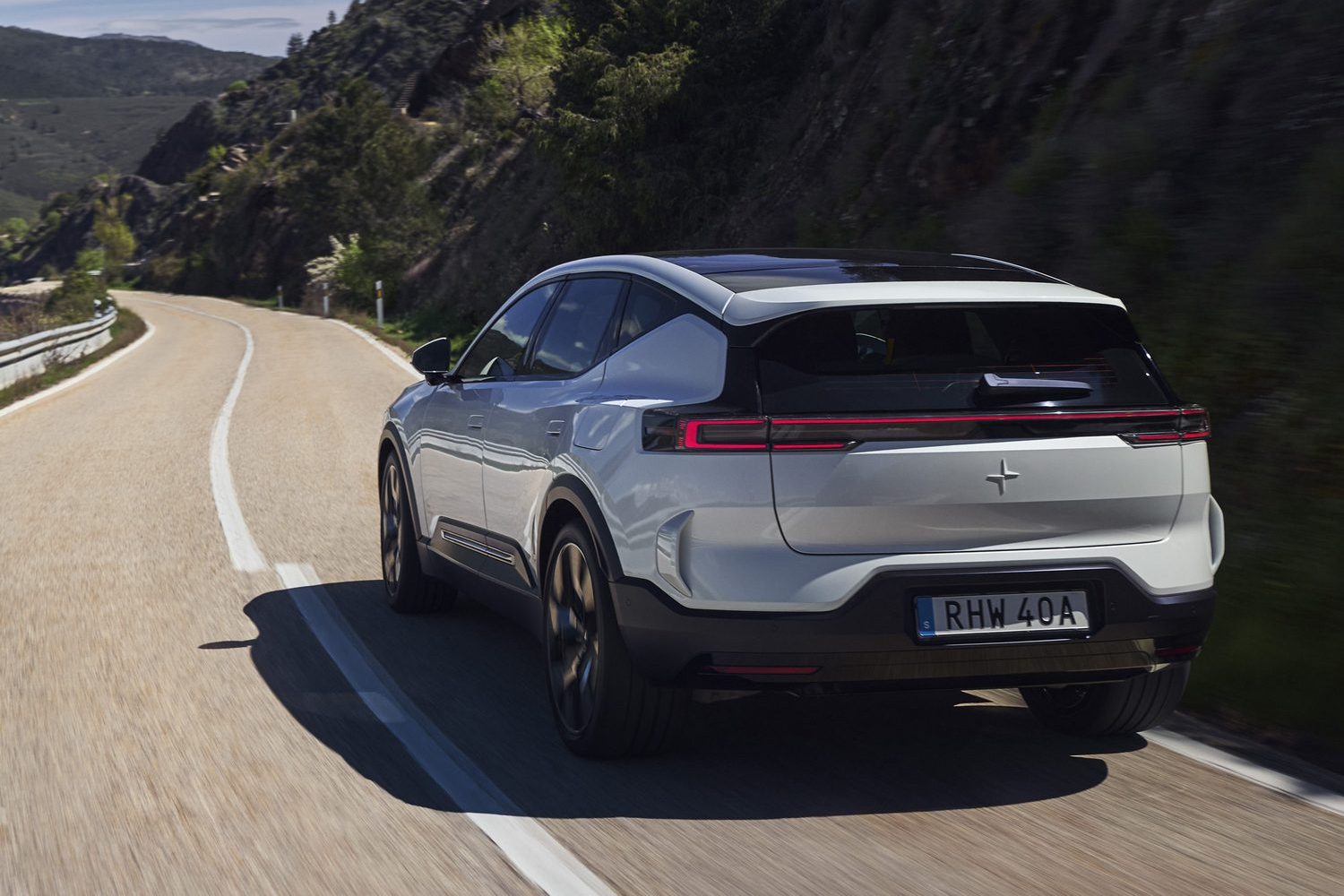
The Polestar 3 is a car with exceptional potential. While you can quibble with the boot space and some of the cabin trim, it enters the market with its head held high against the German opposition, hitting them with slick, sleek styling, an impressive driving experience and a sense of Scandi-cool that rivals can’t match.

